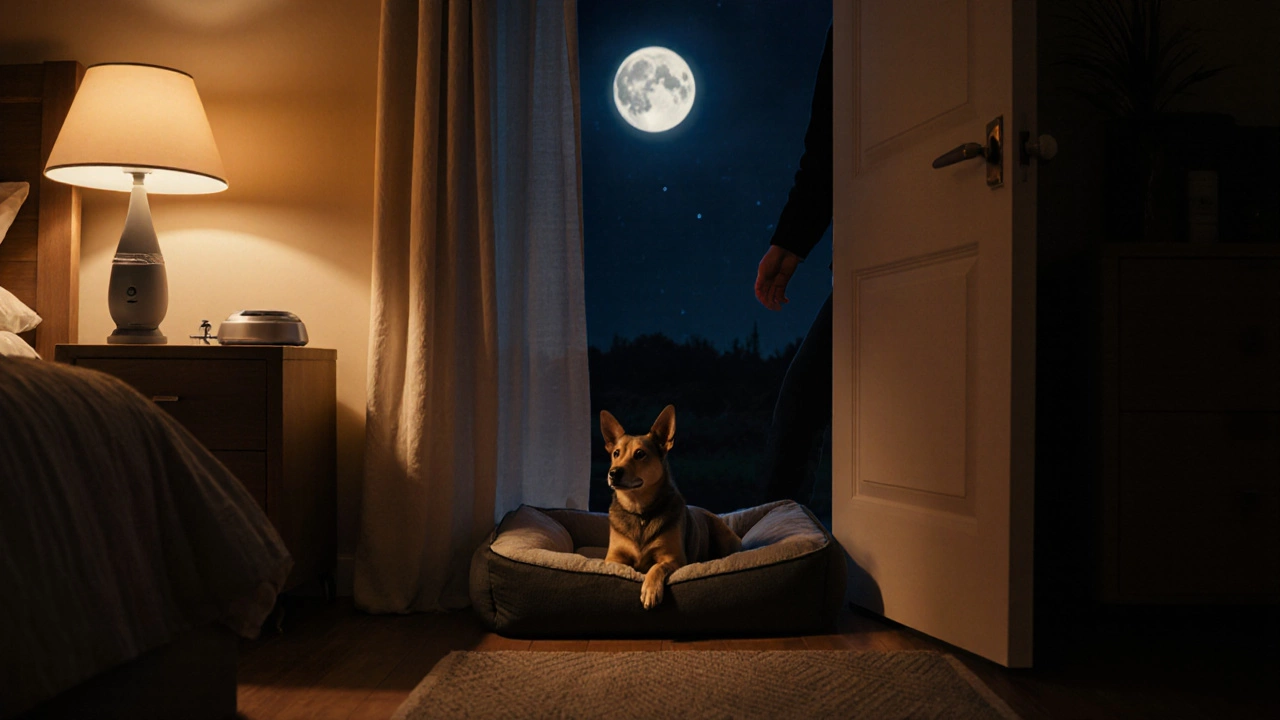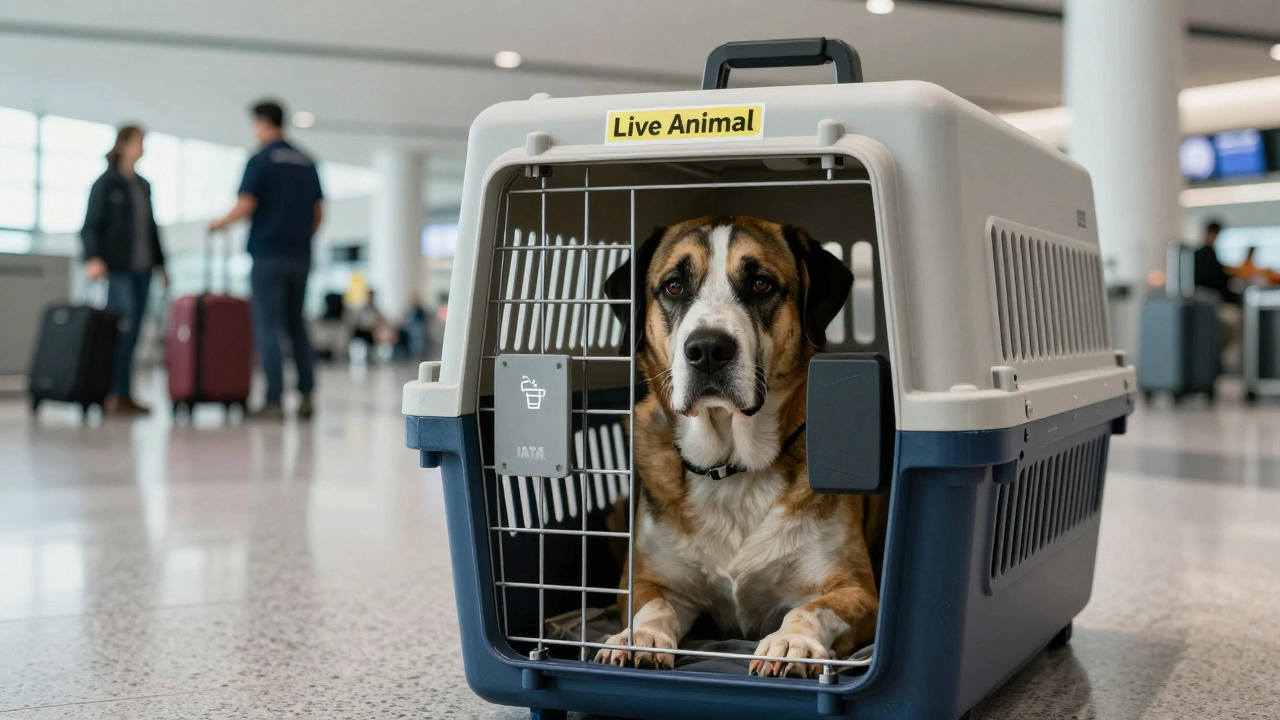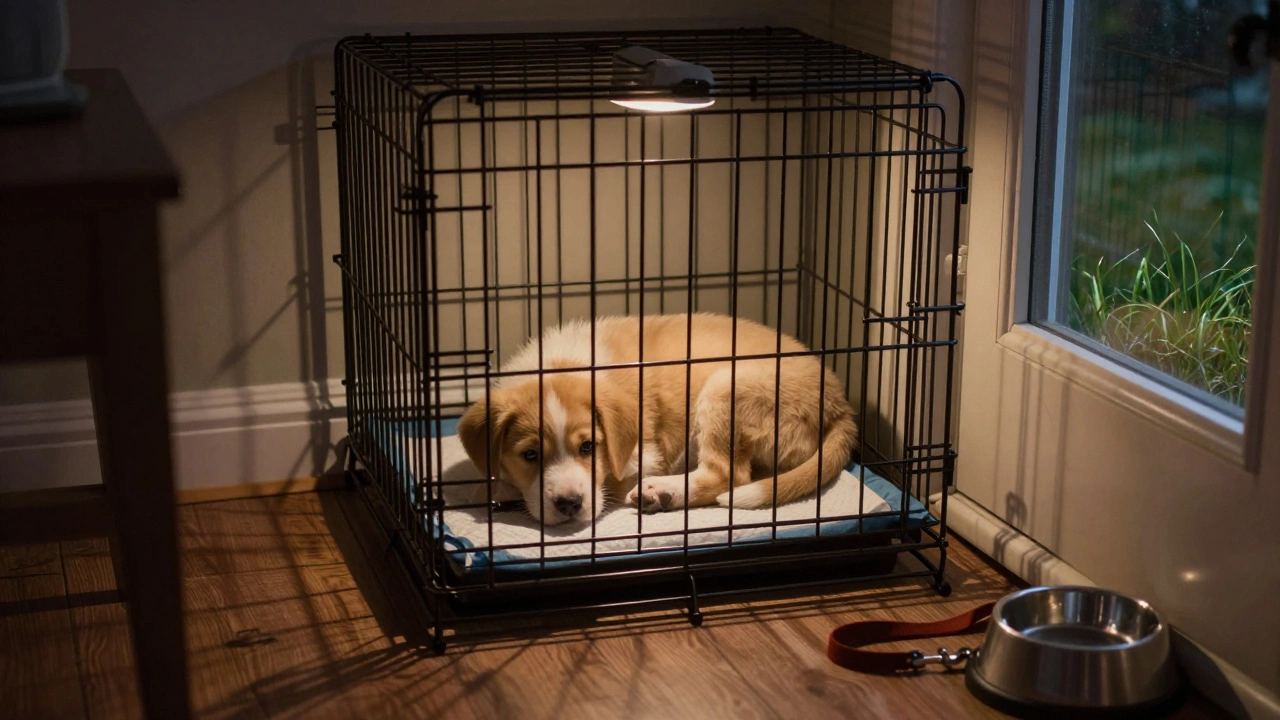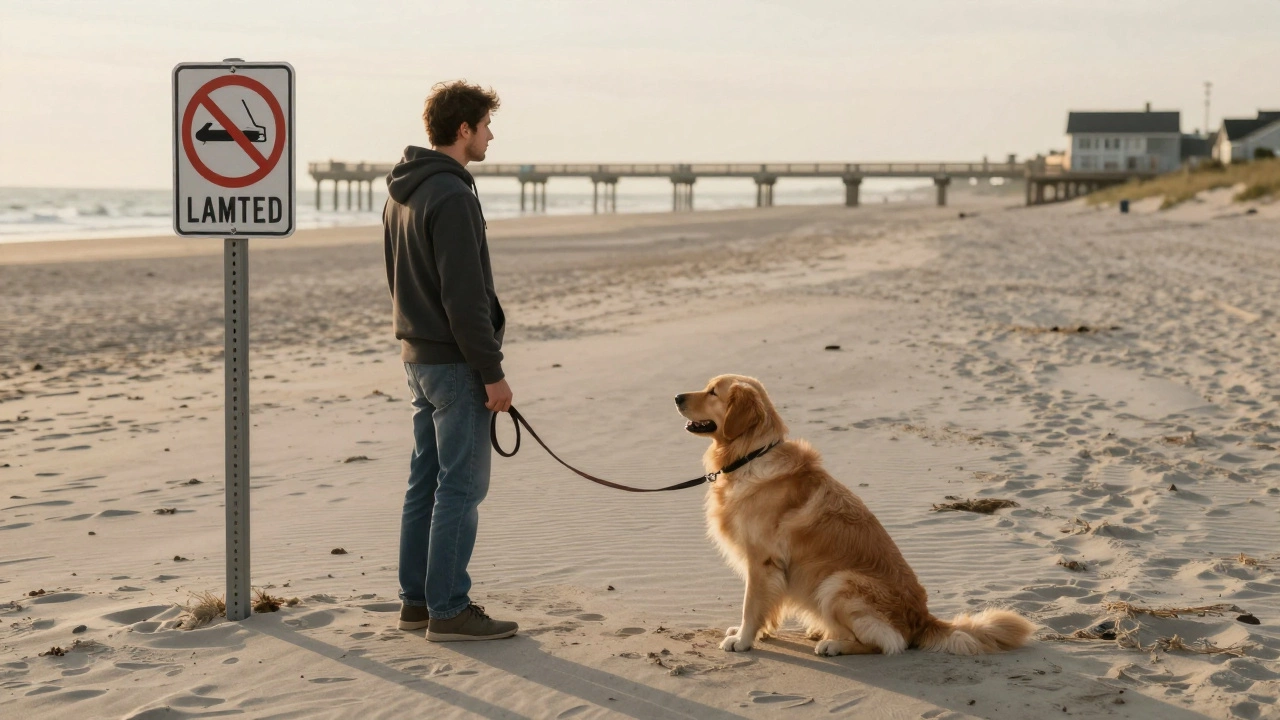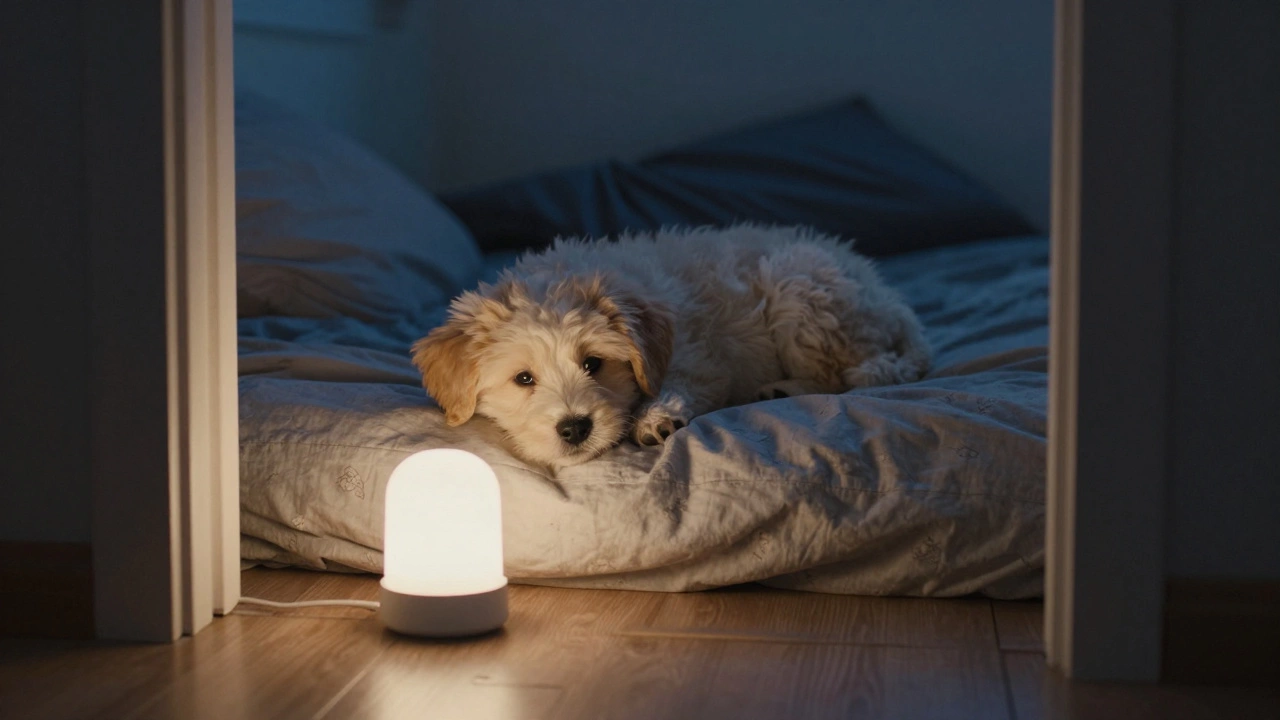Overnight Dog Stay Calculator
Calculate Your Dog's Overnight Readiness
This tool helps determine if your dog is ready for an overnight alone stay based on key factors from veterinary guidelines.
Results will appear here
Enter your dog's information and click Calculate to see if it's safe to leave your dog alone overnight.
When a busy schedule forces you to head out for a night‑long event, the question pops up: leave a dog alone overnight - is that cruel, or can it be done responsibly? Below we break down the emotional and physical needs of a dog, spotlight the role of a good dog bed, and give you a toolbox of safe‑play options so you can decide with confidence.
Dog is a domesticated carnivore that thrives on social contact, routine, and a secure sleeping environment. Canines have evolved alongside humans for thousands of years, which means they interpret prolonged isolation as stress or even neglect.Why Dogs Need Company at Night
- Pack instinct: In the wild, wolves never sleep alone. Modern dogs still carry that pack mentality, craving proximity to their "family" during rest.
- Security: Darkness amplifies sounds, and a solitary dog may become startled by ordinary household noises.
- Temperature regulation: Dogs often huddle with a companion to stay warm, especially smaller breeds or senior dogs.
Ignoring these instincts can trigger separation anxiety, increased heart rate, and even shallow sleep, which over time affects health.
Potential Risks of Leaving a Dog Overnight
Leaving a dog alone isn’t automatically cruel, but certain hazards become more likely when the animal is unsupervised for many hours:
- Accidental injury: Chewing on cords, slipping on slippery floors, or getting stuck in a crate that’s too small.
- Health emergencies: A sudden illness (e.g., pancreatitis) may need immediate attention that you can’t provide.
- Behavioral fallout: Repeated nights alone can lead to barking, destructive chewing, or house‑soiling.
- Mental stress: Dogs may develop heightened vigilance, leading to chronic anxiety.
These risks don’t make the act inherently cruel, but they highlight the responsibility you have to mitigate them.
How a Good Dog Bed Makes a Difference
Dog Bed is a specially designed sleeping surface that supports proper posture and temperature balance. Quality beds use orthopedic foam or memory foam, removable washable covers, and raised edges for a sense of security.When a dog knows its bed is safe and comfortable, the bed itself becomes a "secure base" - a concept borrowed from animal behavior research that reduces stress even when the owner isn’t present.
Key features to look for:
- Supportive cushioning for joint health (especially for seniors and large breeds).
- Non‑slip bottom to keep the bed in place on hardwood or tile floors.
- Washable, hypoallergenic cover to keep the sleeping area clean.
- Side bolsters or a rounded shape that mimics a den.
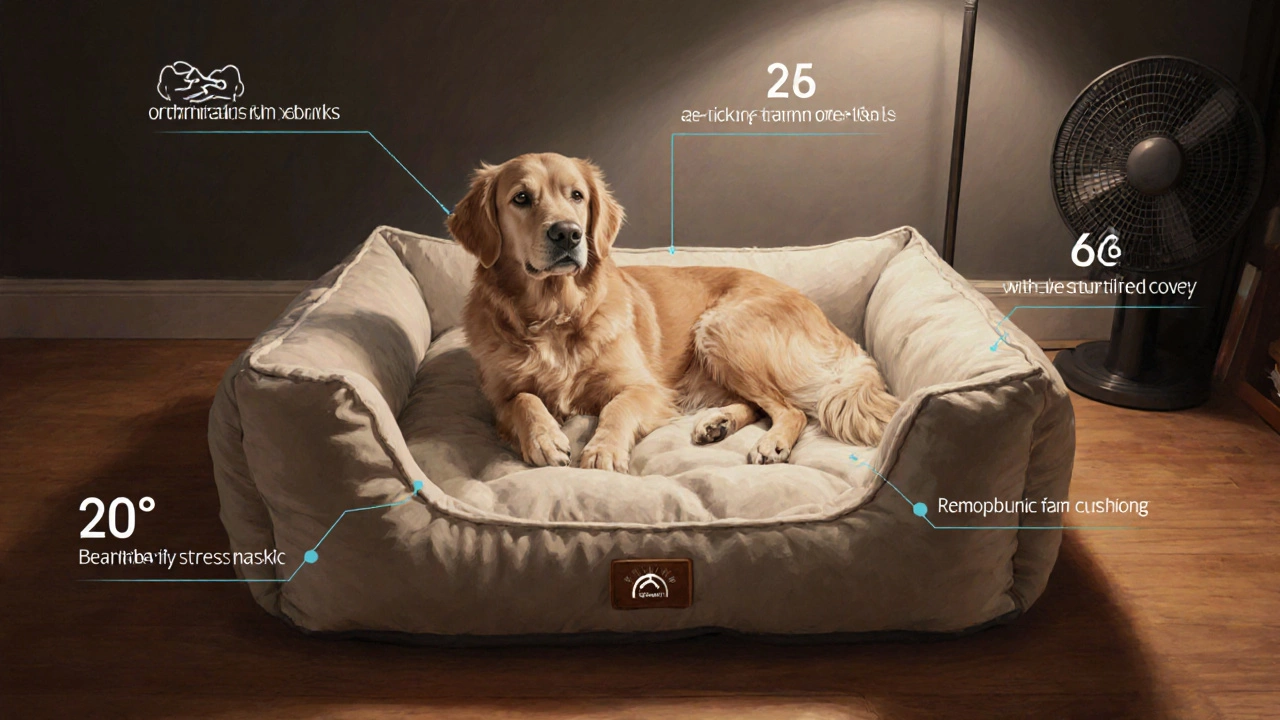
Creating a Safe Overnight Environment
Beyond a comfortable bed, a few tweaks turn a regular room into a dog‑friendly sleep zone:
- Limit access to hazards: Hide cords, secure trash cans, and block off stairways.
- Temperature control: Keep the room between 18‑22 °C (64‑72 °F). Use a heated pad for short‑haired breeds in winter.
- Sound masking: A white‑noise machine or low‑volume fan can drown out sudden bangs.
- Provide water: A spill‑proof water bowl ensures hydration without mess.
When a Crate Is the Right Choice
Crate is a confined space used for training, transport, and safe sleeping. A properly sized crate gives a dog a den‑like feel while preventing destructive behavior.If your dog is crate‑trained, a well‑ventilated crate with a soft crate pad can be a secure haven. Make sure the crate is large enough for the dog to stand, turn around, and lie down comfortably.
Professional Alternatives to Overnight Solo Care
If you’re uneasy about leaving your dog alone, here are three reliable options:
| Option | Cost (per night) | Pros | Cons |
|---|---|---|---|
| Leave Dog Alone (prepared) | £0 | Familiar environment, no extra cost | Risk of emergencies, requires thorough prep |
| Pet Sitter | £25‑£40 | Home visits, personalized care | Requires trust, scheduling |
| Doggy Daycare (overnight) | £50‑£70 | Social interaction, professional oversight | Can be stressful for shy dogs, higher cost |
Pick the solution that matches your dog’s temperament and your budget. A short trial night with a sitter can reveal how your dog reacts before committing long‑term.
Spotting Signs of Distress
Even with the best set‑up, some dogs still show subtle cues that they’re struggling. Keep an eye out for:
- Excessive whining or howling after you leave.
- Destructive chewing on furniture or the bed.
- Loss of appetite or sudden weight loss.
- Changes in bathroom habits - e.g., accidents after a night alone.
- Lethargy or hyper‑vigilance the next morning.
If any of these appear, consider shortening solo nights or seeking professional advice.
Quick Overnight Checklist
- Verify the dog bed is clean, positioned on a non‑slip surface, and has adequate cushioning.
- Check that the room temperature is within the safe range.
- Secure cords, trash, and any chewable items.
- Leave a water bowl with a spill‑proof design.
- Set up a white‑noise machine or soft music.
- Ensure the dog has had a bathroom break and a light exercise session.
- Leave a contact number for your veterinarian and a trusted neighbor.
Follow this list and you’ll dramatically lower the chance of a stressful night.
When to Call a Veterinarian
Veterinarian is a medical professional specializing in animal health. A vet can diagnose and treat health issues ranging from acute injuries to chronic anxiety.If your dog shows any of the following after an overnight stay, ring the vet:
- Persistent vomiting or diarrhea.
- Signs of pain (limping, whimpering).
- Sudden, extreme fatigue.
- Unusual aggression or fearfulness.
Is it ever okay to leave a dog alone for a whole night?
Yes, if the dog is healthy, experienced with being alone, and you’ve prepared a safe environment with a comfortable bed, water, and no hazards. Always monitor for signs of distress and have a backup plan.
How long can a dog stay alone overnight without a sitter?
Most adult dogs can handle 8‑10 hours if they’ve had a bathroom break, exercise, and a secure sleep area. Puppies under six months need more frequent care.
What type of dog bed is best for overnight comfort?
Orthopedic foam beds with washable covers and a raised rim work well for most breeds. Seniors and large dogs benefit from extra joint support.
Can a crate replace a dog bed for a night alone?
If the dog is crate‑trained, a crate with a soft pad can be comforting. Ensure the crate is large enough for the dog to stretch; otherwise, a bed is preferable.
What are the warning signs of separation anxiety at night?
Excessive whining, pacing, destructive chewing, and accidents inside the house are common signs. Persistent anxiety may need a behaviorist’s help.

